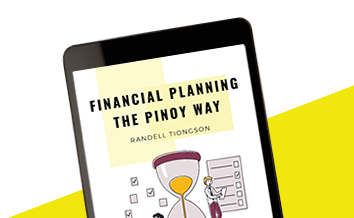Italian or Philippine debt anyone?
By Randell Tiongson on November 20th, 2011Italy is a first world country by any definition. This country is known for many things like architecture, history, Ferrari, Gucci and pasta. This is also a leading nation that employs many of our Filipino workers bulk of which are domestic helpers. Recently, Italy has been in the center of a lot of talks with its ballooning debt & fiscal disarray. Many doom & gloom scenarios places Italy as a nation to follow the state of Portugal, Ireland, Greece and Spain (collectively known as PIIGS).
 Just how risky is Italy? The worsening debt issue of Italy is scaring a lot of people, particularly financial institutions that owns a lot of Italian debt. Standard & Poors recently downgrades Italy from A+ to A but the downgraded rating still makes Italy’s debt ‘investment grade’. The economy of Italy is in a precarious state and the whole world is now looking closely as to how the Italians will handle their situation with much anxiety. Just recently, a new leader was elected in the Italian parliament, a technocrat who just might change the fate of a country rich in heritage.
Just how risky is Italy? The worsening debt issue of Italy is scaring a lot of people, particularly financial institutions that owns a lot of Italian debt. Standard & Poors recently downgrades Italy from A+ to A but the downgraded rating still makes Italy’s debt ‘investment grade’. The economy of Italy is in a precarious state and the whole world is now looking closely as to how the Italians will handle their situation with much anxiety. Just recently, a new leader was elected in the Italian parliament, a technocrat who just might change the fate of a country rich in heritage.
The Philippines is considered an emerging market, a politically correct term for ‘third world’. Unfortunately, our country is considered a laggard even amongst Asia and not a favorite destination of foreign investments. Philippine sovereign debt is not a choice investment by many owing to many factors such as bad governance, debt issues, political instability, among others. The leading credit rating agency, Standard & Poors gives this Southeast Asian archipelago a rating of BB, two notches below ‘investment grade’. The Philippines is one of those countries that send thousands of its workforce to work for Italians.
In investing, yield is always a function of risk – the higher the risks are, the higher the yields should be – at least in theory. Following the credit ratings of S&P and owing to the nature of the economy of Italy and the Philippines, it would be logical that our country is a much riskier one than Italy. If we are riskier than Italy, then it is only logical to assume that investing in Philippine debt should give a much higher yield than Italian sovereigns. That is not the case today. Italian sovereign debts now give a yield of about 7% p.a. (Yield to Maturity or YTM) while Philippine debts (popularly known as ROP) now yields about 3 to 4% p.a. While credit raters, economists and the media say we are a very risky nation, the market has declared otherwise. Price is a function of value – if Italian debt is now cheaper than Philippine debt, I would like to think that the market has made its judgment. Another question in my mind is just how credible and relevant are credit raters today? Raters have been giving the Philippines below investment grade (also referred to as junk) yet we continue to be faithful in the payment of our obligations, no scenario of default and our debt to GDP ratios are twice better than first world nations. Go figure!
When an investment grade country’s sovereign debt gives higher yields (ergo riskier) way above the sovereign debt of a below investment grade country (ergo less riskier) – that is the new normal in a new world order.

